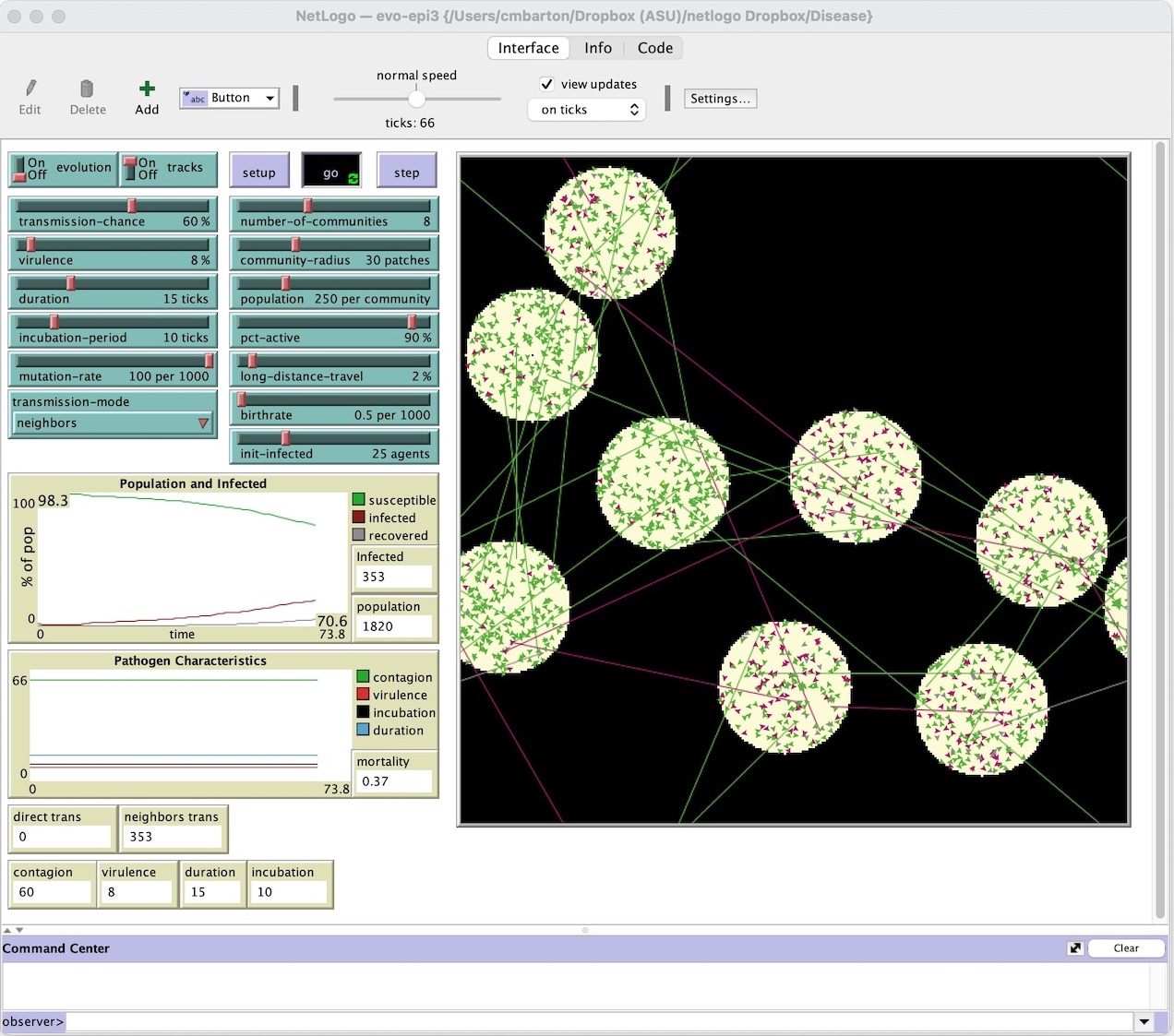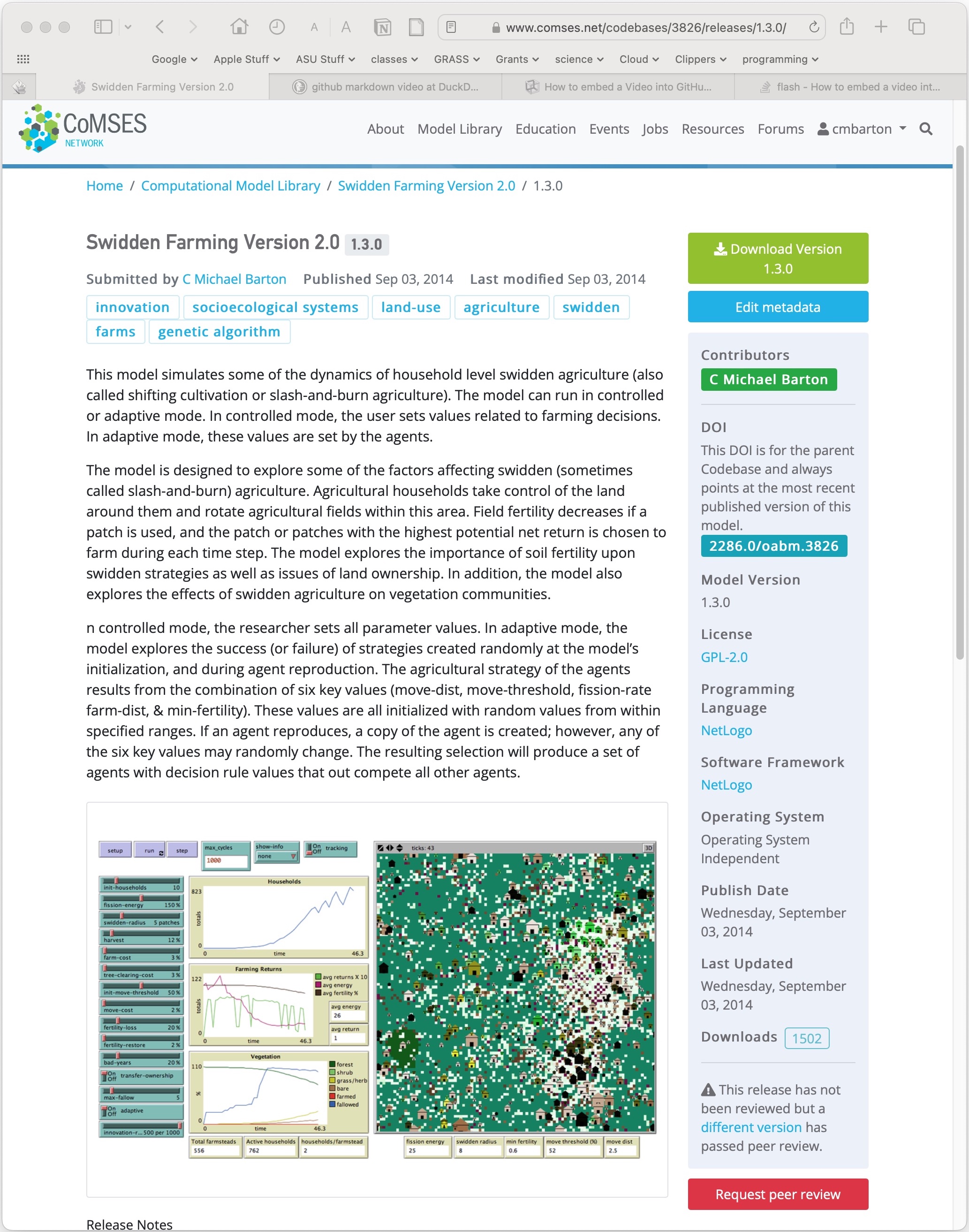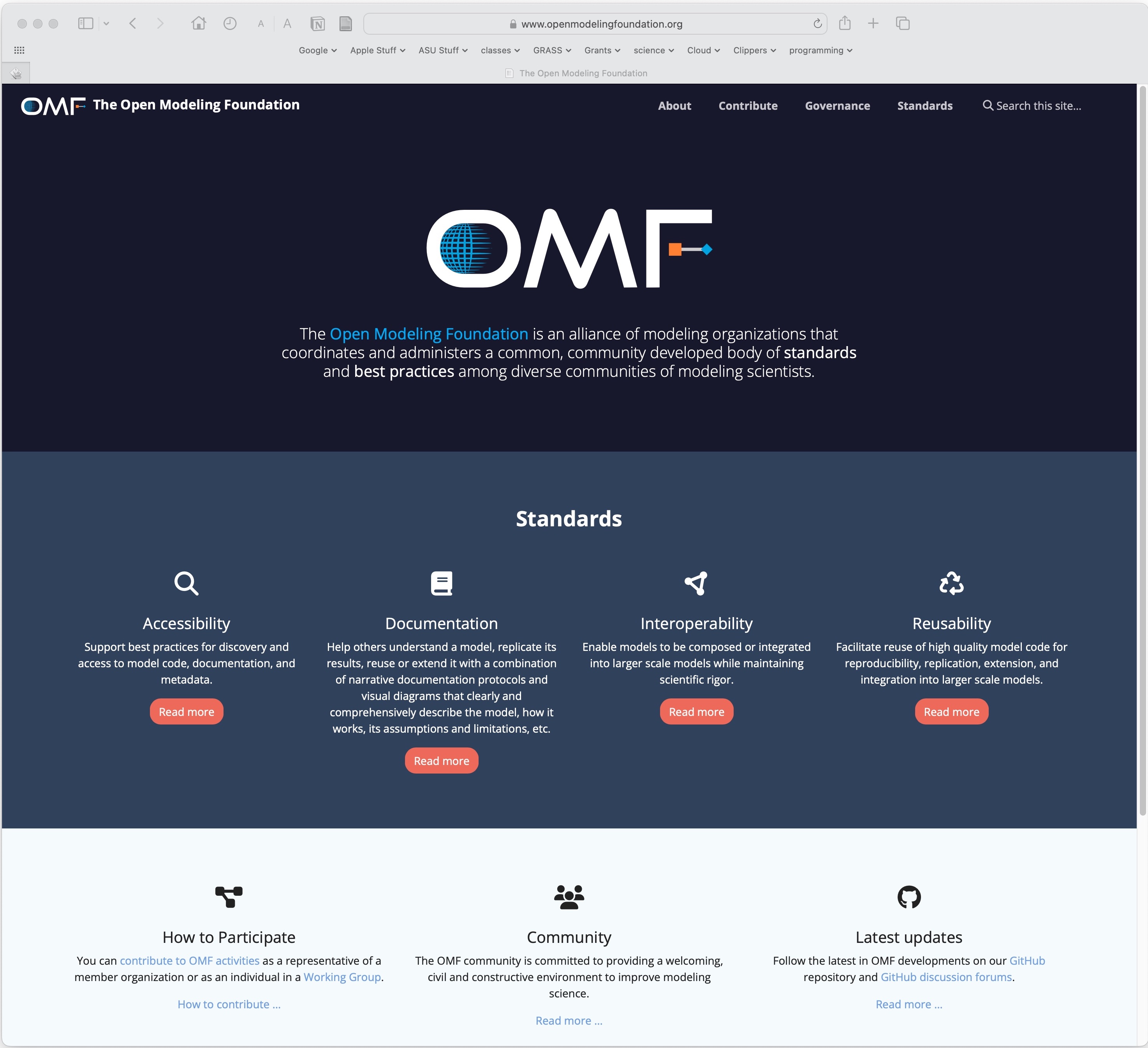Agent Based Models
 The dynamic complexity that characterizes interactions between humans and the natural environment, has intersected over the past century with increasingly rapid population growth, urbanization, and technological development to make human society an important driver of environmental changes that threaten to exceed our abilities to adapt using traditional means. This makes it imperative that we find better ways to track these global socio-ecological systems (or ‘socioecosystems’), and anticipate their social and natural consequences.
The dynamic complexity that characterizes interactions between humans and the natural environment, has intersected over the past century with increasingly rapid population growth, urbanization, and technological development to make human society an important driver of environmental changes that threaten to exceed our abilities to adapt using traditional means. This makes it imperative that we find better ways to track these global socio-ecological systems (or ‘socioecosystems’), and anticipate their social and natural consequences.
Late 20th Century advances in information technology offer powerful new tools to assist us in understanding—and hopefully even managing—these coupled social and natural systems.  In this context, Agent Based Models (ABMs) have emerged as a promising cybertool to study the dynamics of complex human and biological systems, integrating individual perceptions and behaviors in the contexts behavioral ecology, game theory of decision-making, and geospatial representations of the world. While ABMs are much discussed and are rapidly becoming perceived as a requirement for cutting-edge research centering on human-environmentalinteraction, most social and natural scientists still have a limited awareness of their potential, and the experimental nature of most ABM platforms prevents them from being readily accessible to researchers.
In this context, Agent Based Models (ABMs) have emerged as a promising cybertool to study the dynamics of complex human and biological systems, integrating individual perceptions and behaviors in the contexts behavioral ecology, game theory of decision-making, and geospatial representations of the world. While ABMs are much discussed and are rapidly becoming perceived as a requirement for cutting-edge research centering on human-environmentalinteraction, most social and natural scientists still have a limited awareness of their potential, and the experimental nature of most ABM platforms prevents them from being readily accessible to researchers.
Try a simple model of optimal foraging patch choice created in the NetLogo ABM platform. Model documentation and NetLogo code can be viewed from the tabs at the bottom of the screen. For more information, see the published model in the CoMSES.Net Computational Model Library.
Barton, C Michael (2013, April 27). “Patch choice model from Optimal Foraging Theory (Human Behavioral Ecology)” (Version 1.0.0). CoMSES Computational Model Library. Retrieved from: https://www.comses.net/codebases/2224/releases/1.0.0/
CoMSES Network
 I direct the the Network for Computational Modeling in Social and Ecological Sciences (CoMSES.Net), an international community of researchers, educators, and professionals with a common goal of improving the way we develop, share, and use computational models (including ABMs). CoMSES Net provides diverse resource for model based research, including the Computational Model Library, discussion forums, employment opportunities, and educational materials. The CoMSES CoRe Center for open science and reproducibility in scientific computation is a ‘big data spoke’ node in the National Science Foundation’s national big data infrastructure network and its West Big Data Innovation Hub. Current and prior support for CoMSES.Net is from the NSF CSSI, Digging Into Data, Coupled Natural and Human Systems, and Human Social Dynamics programs (grants OAC-2103905, BCS-623162, GEO-0909394, SMA-1430411, and IIS-1658584).
I direct the the Network for Computational Modeling in Social and Ecological Sciences (CoMSES.Net), an international community of researchers, educators, and professionals with a common goal of improving the way we develop, share, and use computational models (including ABMs). CoMSES Net provides diverse resource for model based research, including the Computational Model Library, discussion forums, employment opportunities, and educational materials. The CoMSES CoRe Center for open science and reproducibility in scientific computation is a ‘big data spoke’ node in the National Science Foundation’s national big data infrastructure network and its West Big Data Innovation Hub. Current and prior support for CoMSES.Net is from the NSF CSSI, Digging Into Data, Coupled Natural and Human Systems, and Human Social Dynamics programs (grants OAC-2103905, BCS-623162, GEO-0909394, SMA-1430411, and IIS-1658584).
Open Modeling Foundation
 In December, 2021, CoMSES.Net joined 44 other modeling science organizations from around the world to establish the Open Modeling Foundation (OMF). The OMF is a new federation of scientific and professional organizations spanning the social, ecological, environmental, and geophysical sciences. As an international open science community that works to enable the next generation modeling of human and natural systems, the OMF coordinates and administers a common, community developed body of standards and best practices among diverse communities of modeling scientists. It also provides informational, data, and technological resources to facilitate the implementation of common standards and best practices among the scientific communities it serves. Its vision is to enable open and ethical modeling efforts across domains of human and Earth systems sciences and engineering to work together to provide an integrated representation of the complex world in which we now live. I am serving as Executive Director of the OMF. The OMF is supported by the Alfred P. Sloan Foundation (grant G-2022-19471)
In December, 2021, CoMSES.Net joined 44 other modeling science organizations from around the world to establish the Open Modeling Foundation (OMF). The OMF is a new federation of scientific and professional organizations spanning the social, ecological, environmental, and geophysical sciences. As an international open science community that works to enable the next generation modeling of human and natural systems, the OMF coordinates and administers a common, community developed body of standards and best practices among diverse communities of modeling scientists. It also provides informational, data, and technological resources to facilitate the implementation of common standards and best practices among the scientific communities it serves. Its vision is to enable open and ethical modeling efforts across domains of human and Earth systems sciences and engineering to work together to provide an integrated representation of the complex world in which we now live. I am serving as Executive Director of the OMF. The OMF is supported by the Alfred P. Sloan Foundation (grant G-2022-19471)
My Published Models
Diet breadth model from Optimal Foraging Theory (Human Behavioral Ecology)
Patch choice model from Optimal Foraging Theory (Human Behavioral Ecology)
Formation of Lithic Assemblages v. 1
Hominin ecodynamics v.1
Hominin Ecodynamics v.1.1 (update for perception and interaction)
Hominin ecodynamics v.2
Swidden farming by individual households
Swidden farming by individual households version 2
Swidden Farming Version 2.0
MedLanD Modeling Laboratory v.1
